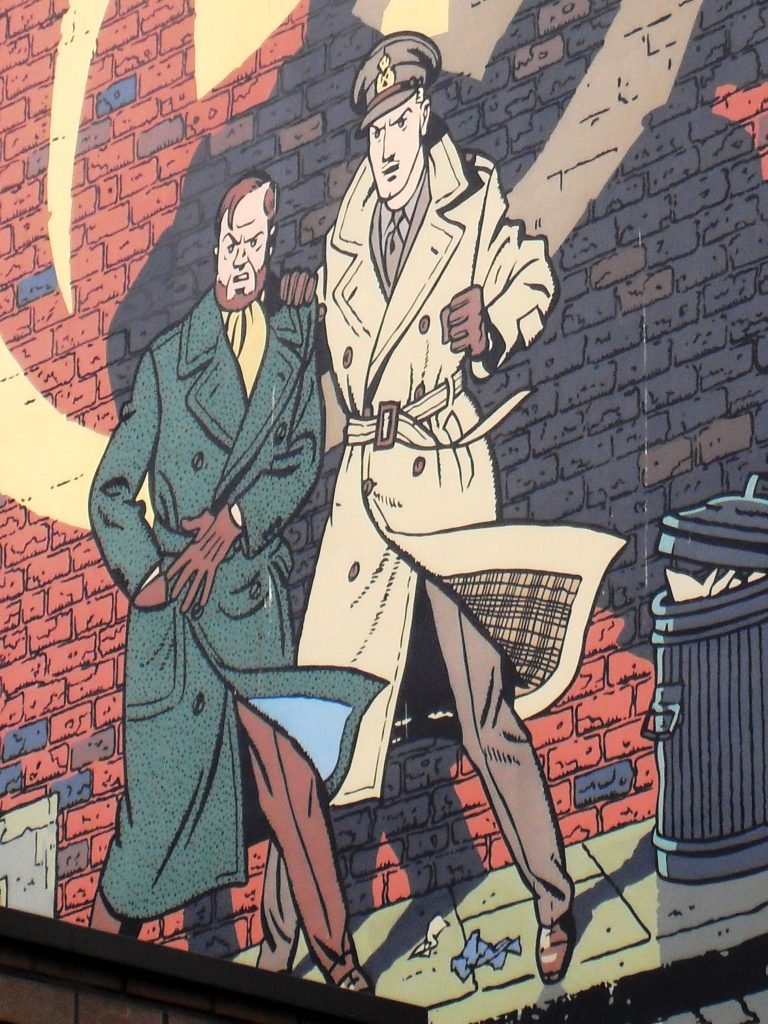
Comic strips or books are very useful to help the learning of French, whether they are used in class with a teacher or read at home. This type of literature is very motivating and helps students understand and learn authentic French, based on direct speech via dialogues between fictional characters.
The texts are short, straightforward, and striking, which help with motivation.
Plus, the images give clues about the meaning of the dialogue and the plot.
When one adds to that the fact that comic books are full of sociocultural references and their characters are part of the cultural heritage of the French speakers, they start looking like ideal teaching materials.
It is worth pointing out that comics are especially important in the French-speaking culture, where they are considered a legitimate art form. France has the largest comic market in the world after the U.S. and Japan, worth about $400 million in 2012. The annual Festival International de la Bande Dessinée in Angoulême is the biggest artistic festival devoted to comics in the world. Founded in 1973, the festival attracts 250,000 visitors, and there are smaller festivals every weekend all over the country.
The bande dessinée (often called BD) is widely accepted as the “ninth art”—a term coined in the 1960s. It has been enshrined as such in the Cité Internationale de la Bande Dessinée et de l’Image in Angoulême, a cultural center that includes a museum, the Musée de la Bande Dessinée, a specialized library, a bookstore, and a cinema. The museum is designated as a musée de France, putting it in the same category as the Louvre.
Everything began in 1929 with the creation of Tintin by Hergé and the birth of a Franco-Belgian school of the comic book during the Second World War. The French-speaking city of Brussels lists this art form extensively among its tourist attractions. Characters from Belgian comic strips were drawn by their illustrators on the facades of buildings, and guided tours are organized to discover these majestic frescos. One can also visit Le Centre Belge de la Bande Dessinée.
Famous Comics of the French-Speaking World
- Tintin is the Belgian comic strip hero par excellence. His adventures as a reporter are fascinating for analyzing the evolution of representations over time. Teachers can use Tintin with teenagers, young adults, and adults.
- Blake et Mortimer are spy comic strips that French teachers can study with young adults and adults.
- Les Schtroumpfs (the Smurfs) are blue tiny characters who live in mushrooms and fear the mean Gargamel. This comic strip is great for children up to the age of twelve.
- Boule et Bill is also a Belgian creation. Boule is the master and friend of Bill, a cocker spaniel. The latter does not speak but is always able to communicate. It is a nice comic strip for children up to the age of twelve.
- Lucky Luke is the creation of a Franco-Belgian collaboration. Lucky Luke is a lonely Western cowboy who will fascinate teenagers, young adults, and adults.
- Spirou et Fantasiois another Franco-Belgian comic. The eponymous characters are reporters who try to save the world by stopping gangsters, crazy scientists, and dictators. It is suitable for children up to the age of twelve.
- Astérix is a French creation. The character was created in 1949 by René Goscinny and Albert Uderzo. The humorous adventures of Astérix are about the inhabitants of a small Gallic village who do everything to resist the invasion of the Romans. Astérix is entertaining for everyone and so important in French culture that he rivals Mickey Mouse with his own theme park—Parc Astérix in Plailly, Oise, in Northern France.
In Practice
Comics are an excellent basis for class discussions. A French teacher can choose different approaches: the intercultural approach, the chronological one to compare two specific moments in time, the artistic one to analyze the complementarity of the image and the text… And, during discussions, classes can question if humor is able to cross cultural and linguistic boarders.
The projects that teachers can offer in class are numerous. The most obvious project is the creation of a comic strip in class. In small groups, students can discuss (in French) the following themes:
- The plot
- The profile of the different characters
- The appearance of the characters
- The dialogues
- The settings
- The colors
- The atmosphere…
This project can involve all students, using each person’s different skills. They can decide to draw or they can use specific websites which are made to create comic strips.
Most of these comic strips became cartoons, animated movies, or movies. It can be good to compare the comic strips to their adaptations.
As a conclusion, comic strips are fantastic instructional materials. Teachers and students are not likely to be bored or watch the clock during French class!
Emmanuelle Amrein Franks has 15 years of experience teaching English, French, and Spanish, with a master’s degree in French as a second language. She began her American career as a French teacher at Alliance Française in Pasadena, California, and as a Spanish instructor at Louis Vuitton. She is also a DELF-DALF examiner, a translator (English–French), and the copywriter for https://kitdesurviecalifornie.wordpress.com/—a website for French speakers or francophiles who are interested in visiting California.





